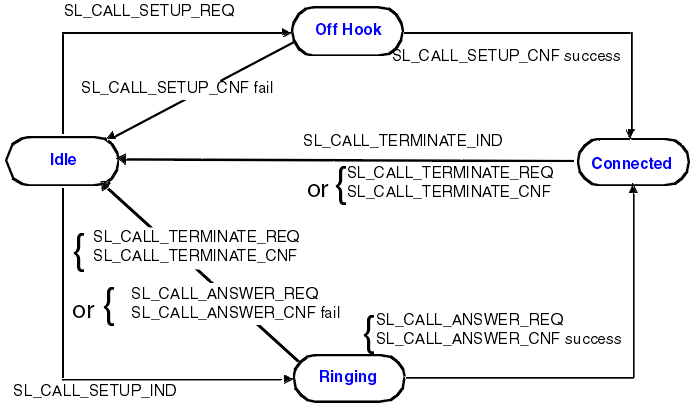The state transitions shown in Figure 1 show the events visible to the user of the signaling interface.
Common channel signaling processes are responsible for all the signaling information for a trunk. Therefore all the flows required to set up and clear a call must be handled by the signaling process.
Figure 1. Common channel signaling model


See Call transfer model for details of how a Blueworx Voice Response signaling process implements call transfer. See Message waiting indicator for details of how a Blueworx Voice Response signaling process implements message waiting indicators.